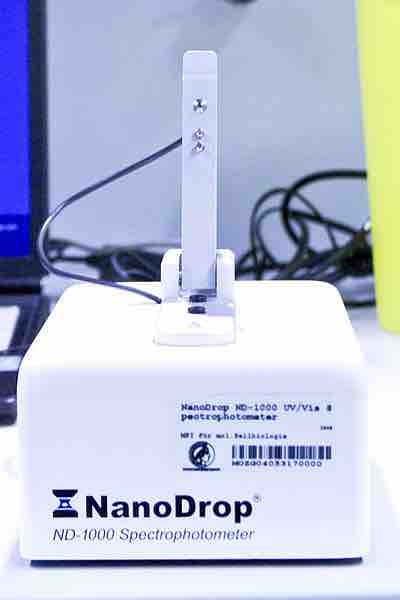Measurement in Three Phases of Growth
Bacterial growth follows three phases: the lag phase, the log phase, and the stationary phase. The measurement of an exponential bacterial growth curve in a batch culture was traditionally a part of the training of all microbiologists; the basic means requires bacterial enumeration (cell counting) by direct and individual (microscopic, flow cytometry), direct and bulk (biomass), indirect and individual (colony counting), or indirect and bulk (most probable number, turbidity , nutrient uptake) methods. Models reconcile theory with the measurements.
METHODS OF MEASUREMENT
There are several methods for measuring cell mass, including the gravimeter method which uses ordinary balances to weigh a sample (dry weight/ml) after the water has been removed.
An indirect method for calculating cell mass is turbidimetry. Cell cultures are turbid: they absorb some of the light and let the rest of it pass through. The higher the cell concentration is, the higher the turbidity. Spectrophotometers are electrical appliances that can measure turbidity very accurately. The culture is placed in a translucent cuvette; the cuvette is placed in the machine and the turbidity measured immediately. Simple mathematical formulae help convert the detected turbidity to cell concentration. Using spectrophotometry for measuring the turbidity of cultures is known as turbidometry. Note the difference in spelling: turbidimetry and turbidometry are not the same word.
In spectrophotometry, cultures usually do not need to be diluted, although above a certain cell density the results lose reliability. Of all the electrical appliances used for counting cells, a spectrophotometer is the cheapest and its operation the fastest and most straightforward. This has made spectrophotometry the methods of choice for quick measurements of bacterial growth and related applications. There are spectrophotometers in which several cuvettes can be inserted at one time, reducing work time even more. Additionally, there are spectrophotometers that require extremely small volumes of culture, as little as 1 microliter . This, combined with the stochastic nature of liquid cultures, enables only an estimation of cell numbers.

Spectrophotometer
This spectrophotometer can measure as little as one microliter of a sample.
An additional method for the measurement of microbial mass is the quantification of cells in a culture by plating the cells on a petri dish. If the cells are efficiently distributed on the plate, it can be generally assumed that each cell will give rise to a single colony. The colonies can then be counted, and based on the known volume of culture that was spread on the plate the cell concentration can be calculated.
As is with counting chambers, cultures usually need to be heavily diluted prior to plating; otherwise, instead of obtaining single colonies that can be counted, a so-called "lawn" will form, resulting in thousands of colonies lying over each other. Additionally, plating is the slowest method of all: most microorganisms need at least 12 hours to form visible colonies.